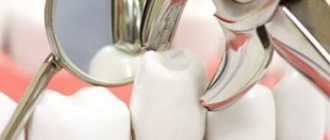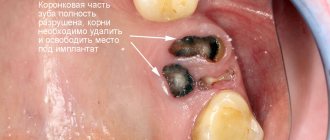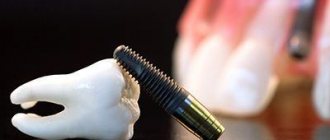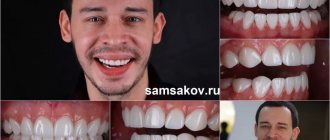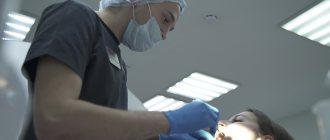Tooth extraction in dentistry is divided into simple and complex. When extracting a tooth with one root, such manipulation is considered simple. If the tooth has a complex root with several branches, then the procedure for removing it will be complex and is carried out using special tools and techniques.
In what cases is dental surgery difficult?
Complex manipulations regarding tooth extraction include the following situations:
- with disconnected roots that are excessively curved inward or directed in different directions;
- when the problem tooth is located in the affected bone;
- in the complete absence of a crown, when there is nothing to grab onto with forceps;
- if a filling was previously installed in the tooth, which can crack under the mechanical influence of forceps;
- when the tooth is impacted or dystopic;
- removing the "eight"
These are the main clinical features in which it is impossible to get rid of a diseased tooth using a standard simple procedure. Moreover, in each specific case the reasons for complex extraction may be individual.
Cases when complex surgery is necessary
It often happens that the only possible way to get rid of a defect formed by a complex tooth is to remove it.
Indications for this type of procedure are as follows:
- the formation of periodontal tumors and edema, accompanied by soreness of the mucous membranes and gums;
- numbness of the face resulting from damage to the nerve endings of a diseased tooth;
- with an increased risk of curvature of adjacent teeth;
- in the presence of diseases caused by improper positioning of the tooth.
Surgeries to remove problematic teeth are contraindicated for those who suffer from pathologies of the cardiovascular system, with poor blood clotting, patients who have undergone a hypertensive crisis, in the presence of infectious or viral processes in the body, as well as other individual contraindications.
Root apex resection: patient reviews
All patients note that the operation is absolutely painless. However, postoperative pain will occur immediately after anesthesia (severe pain after resection is not typical). The next morning you may see swelling of the soft tissues of the face in the projection of the operation, sometimes a hematoma. In rare cases, suppuration of the surgical wound occurs, but this does not happen often. Prophylactic antibiotics help prevent this complication.
After surgery, they are usually prescribed -
- antibiotic Amoxiclav 625 mg (1 tablet – 2 times a day, 6-7 days),
- NSAID-based analgesics,
- rinsing with a solution of 0.05% Chlorhexidine.
Relapse and reoperation - the percentage of relapses according to official statistics is about 1-3%. If the operation is performed according to all the rules, then there should be no complications. There are 2 main points that determine the quality of the operation. Firstly, the cyst shell must be completely removed (since even a small fragment of the cyst shell remains, it will appear again).
Secondly, this is the quality of root canal filling. If the root canal was poorly prepared, for example, it was not sealed tightly, this will lead to the spread of infection along the canal walls and a new cyst formation. And retrograde root canal filling, which we described above, can also help here.
Preparing for dental surgery
If a patient is faced with the removal of a complex tooth, then an experienced doctor will not perform such manipulations without prior preparation. An x-ray is required before the operation. This is necessary to clarify the location of the tooth in the bone, as well as to evaluate the tissues surrounding it.
When a patient has an inflammatory process, it is first cured by taking antibiotics.
Complications after pulling out problem teeth rarely occur, but to avoid them, the procedure should be trusted to a highly qualified doctor.
Advantages of the dental network “Kariesu.net”
Our dental surgeons do everything possible to first and foremost save the patient’s own teeth. For these purposes, special techniques are used that help avoid removal or delay this operation. If radical treatment is the only option, the doctor carries it out as quickly and painlessly as possible for the patient. In addition, our surgeons effectively restore the soft tissues of the oral cavity, eliminate defects, and restore pink aesthetics - a harmonious appearance of the gums.
If you are concerned about the pathological symptoms listed above, or there is an urgent need for surgery, we invite you for a consultation with a dental surgeon at Karies.net. Appointments with this specialist are available daily. Dial our number or provide contact information in the online form.
How to remove complex teeth: basic techniques
In dentistry, various methods are used to eliminate a complicated tooth, the essence of which depends on the instruments chosen for manipulation:
- removal using forceps. Compared to
in other ways, this is considered the most gentle. This technique is used in cases where the integrity of the crown is preserved. The surgeon grabs the crown with forceps and loosens it in a circular motion until the tooth root ruptures from the alveolus, after which he pulls it out; - elevator extraction. If it is located outside the dentition, it is impossible to pull it out with ordinary forceps, then this technique is used. The instrument is inserted into the periodontal fissure and rotated, as a result of which the ligaments are torn. The tooth is not pulled out of the hole, but squeezed out;
- removal with a drill. This method is used to pull out teeth with multiple roots. First, the roots are separated using a drill and then each piece is removed separately. If a resorcinol-formalin filling is installed on a tooth, then a drill is also used to pull it out.
Which method is the best? Each has certain characteristics and is selected based on the condition of the tooth, the number and depth of its roots.
Dystropic tooth: indications for removal
A tooth with an incorrect location in the dentition relative to its neighbors is called dystrophic. It can take the place of another, spontaneously turn, change the angle of growth, which significantly interferes with neighboring teeth and leads to the formation of a malocclusion.
Indications for extraction of a dystrophic tooth are:
- swelling of the gums and pain;
- numbness of the face due to damage to nerve endings;
- pronounced curvature of adjacent teeth;
- periodontitis or chronic pulpitis;
- when, due to a problem tooth, it is impossible to perform prosthetics;
- if a dystrophic tooth is the cause of periostitis or osteomelitis.
The removal process itself is similar to the procedure for removing an impacted tooth.
Extraction for acute and chronic inflammation
Quite often, the removal of a problematic tooth is accompanied by the presence of purulent foci, gum inflammation or periodontitis. In such cases, the doctor prescribes intensive therapy with the use of antibacterial drugs, and only after the inflammatory process has been suppressed is surgery to remove the tooth performed.
There are also situations when a tooth needs to be removed urgently. Only an experienced, highly qualified doctor can perform surgery in such cases.
approximate cost
Having found out in what cases a tooth must be removed, how to understand that it is impossible or, on the contrary, it is necessary to remove it without delay, whether this can be prevented - it is worth finding out the prices for services. Thus, a procedure at Dentic will cost a client an average of 3,978 rubles. A lot depends on individual aspects: the patient’s condition, the degree of neglect of the case, drug tolerance. And, of course, if, at the time of treatment, concomitant pathological abnormalities are discovered that require preliminary elimination, surgical intervention will be more expensive.
Complex tooth extraction: when is it necessary?
Clinical indications for which the dentist prescribes complex tooth extraction are as follows:
- the presence of an unerupted wisdom tooth in the jaw;
- if the figure eight is incorrectly positioned;
- when removing molars with two or three roots;
- with a severely damaged or twisted root;
- in case of fusion of the tooth root with the jaw bone tissue;
- in the presence of a fistula or cyst;
- with excessive fragility of the crown due to treatment with resorcinol-formalin composition.
The operation itself consists of several stages and is carried out under the influence of powerful anesthetics.
How much does it cost to remove a molar or front tooth - prices in Moscow
The cost of tooth extraction largely depends on the level of complexity of such an operation: in complex clinical cases, you usually have to pay twice as much. Prices for tooth extraction in Moscow start from 4,000 rubles. This amount includes anesthesia, the operation itself and hemostasis (stopping bleeding) after it. Also, the price often includes a control examination of the hole, but not in all clinics. If a complex molar tooth extraction is expected, the price will start from 7,500 rubles. This includes pain relief, the operation itself, as well as hemostasis, the application and subsequent removal of sutures, and antiseptic treatment of the wound.
- Recommendations after surgery .pdf
- Postoperative recommendations .pdf
Stages of complex tooth extraction
Complex removal surgery is carried out only after x-ray diagnostics, during which the shape, length and depth of the roots are determined. If the patient has inflammation, he is prescribed treatment with antibacterial drugs.
Technique of the procedure
Wisdom tooth removal is carried out in the following order:
- the gum is separated from the neck of the tooth by making an incision in the soft tissue;
- if necessary, the interroot septum is sawed or sections of bone tissue are cut out at the location of the tooth;
- then, using forceps, the tooth is rocked and pulled out of the socket;
- Sutures are placed on the gum.
Painkillers are not required after the procedure, since the effect of the anesthetics is still present.
The healing process of the hole after a complex removal
Basically, tissue healing occurs after 7-10 days. It should be noted that this period is quite difficult for the patient. As soon as the effect of the anesthetics stops, aching pain immediately occurs. To eliminate it, you should take pain medication.
The swelling and redness that appears will decrease every day. If there is slight itching in the socket area, this indicates intensive tissue restoration. Removal of sutures after healing is not required since they “dissolve” on their own.
During the regeneration period after removal, it is very important not to disrupt the integrity of the blood clot formed in the socket. To do this, you need to follow a few simple rules:
- during the first 2-3 hours after surgery, do not consume any drinks, much less food;
- Under no circumstances should the well be heated, cleaned or washed;
- do not rinse your mouth for 24 hours after removal;
- When eating food, you need to chew it on the opposite side in relation to the hole.
If you follow these recommendations, the tissue will soon recover without complications.
Possible complications
Any operation is associated with a number of unpleasant moments for the patient that arise after it is performed. Moderate pain, swelling, active secretion of saliva, blood, difficulty opening the mouth and poor general condition are the norm. All these “side effects” completely disappear after a certain time. As a rule, with a simple procedure, negative manifestations are neutralized within 2-3 days. In difficult situations, rehabilitation may take 1 week or even more.
When determining why a tooth should be removed and who should do it, it should be remembered that one of the most severe complications of removal is alveolitis. This pathology is an inflammatory process in the hole left after the removal of a fragment of the dentition. With progressive inflammation, a person’s temperature rises, the smell of rot appears from the oral cavity, and the wound itself becomes covered with a gray coating. The development of pathology is accompanied by increasing pain. Often the sharp pain radiates to the eye, temple or ear. This problem requires an urgent solution. Otherwise, further infection of the entire body is inevitable.
The gums can also become inflamed. This happens mainly due to excessive tissue trauma. The inflammatory process is accompanied by active suppuration. If you ignore the situation, the occurrence of periostitis is possible.
Equally important in the postoperative period is the presence of a blood clot closing the wound. If it is not there, the hole dries out. This is accompanied by bad breath and severe redness of the injured area. Sometimes, during a complex procedure, the nerve endings become irritated. The patient's tongue, lips, cheeks, and even chin may become numb.
Most often, these negative sensations disappear after 5-10 minutes.
